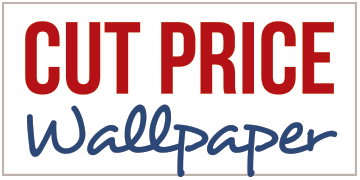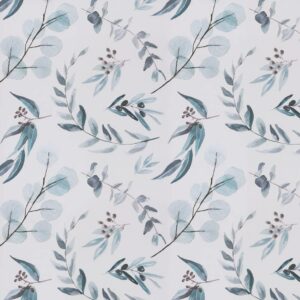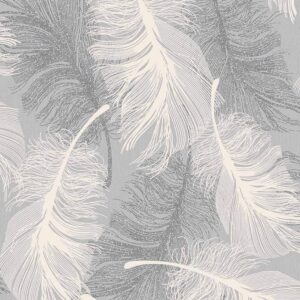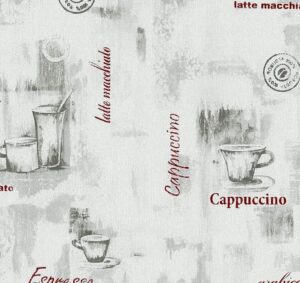Vinyl Wallpaper
Vinyl wallpaper is a popular choice for homeowners and interior designers alike. Its durability, versatility, and wide range of designs make it a great option for enhancing the look and feel of any space. In this ultimate guide, we will explore everything you need to know about vinyl wallpaper, from its types and benefits to choosing the right one for your needs, installation tips, maintenance, and even a comparison with other wallpaper options.
Showing all 4 results
-
Bathroom wallpapers, Alabaster wallpaper, AS Creation Wallpaper, Bedroom wallpaper, Beige wallpaper, Belgravia Wallcoverings, Black Floral Wallpaper, Black Wallpaper, Blue Cloud wallpaper, Blue Panel Wallpaper, Blue wallpaper, Brick Wallpaper, Brown wallpaper, Burnt Orange Wallpaper, Champagne wallpaper, Children's Wallpaper & Kids Wallpaper, Cloud wallpaper, Copper wallpaper, Cream and Black Wallpaper, Cream and Gold Wallpaper, Cream wallpaper, Crown wallcoverings, Dandelion wallpaper, Design id, Erismann Wallcoverings, Fine Decor Wallpaper, Floral Wallpaper, Gold wallpaper, Grandeco Wallpaper, Green Floral Wallpaper, Green wallpaper, Greige wallpaper, Grey and Mustard Wallpaper, Grey cloud wallpaper, Grey wallpaper, Heavyweight Wallpaper, Hessian wallpaper, Holden Decor Wallpaper, Kitchen Wallpaper, Leaf Wallpaper, Light Brown Wallpaper, Multicoloured wallpaper, Paintable, Paste the wall Wallpaper, Peacock Wallpaper, Pink and Grey Wallpaper, Pink wallpaper, Purple wallpaper, Rasch Wallcoverings, Red wallpaper, Rust Wallpaper, Sale Wallpaper, Silver wallpaper, Standard Wallpaper, Taupe wallpaper, Terracotta wallpaper, Textured Wallpaper, Themed Wallpaper, Tropical Wallpaper, Uncategorized, Vinyl Wallpaper, White wallpaper, Yellow wallpaper
£9.99 Add to basket
Showing all 4 results
The Ultimate Guide to Vinyl Wallpaper
Vinyl wallpaper is a popular choice for homeowners and interior designers alike. Its durability, versatility, and wide range of designs make it a great option for enhancing the look and feel of any space. In this ultimate guide, we will explore everything you need to know about vinyl wallpaper, from its types and benefits to choosing the right one for your needs, installation tips, maintenance, and even a comparison with other wallpaper options.
1. Introduction to Vinyl Wallpaper
1.1 What is Vinyl Wallpaper?
Vinyl wallpaper is a type of wall covering made from a synthetic material called polyvinyl chloride (PVC). It is known for its durability and ability to withstand moisture, making it a suitable choice for high-traffic areas like kitchens and bathrooms. Vinyl wallpaper is available in a variety of patterns, colors, and textures, allowing you to find the perfect style for your space.
1.2 Benefits of Vinyl Wallpaper
Vinyl wallpaper offers several advantages over other types of wall coverings. Firstly, it is highly durable and resistant to wear and tear, making it a long-lasting option. It is also easy to clean, as vinyl wallpaper can be wiped down with a damp cloth or sponge. Additionally, vinyl wallpaper is moisture-resistant, which makes it an excellent choice for areas prone to humidity or splashes.
2. Understanding Vinyl Wallpaper Types
2.1 Solid Vinyl Wallpaper
Solid vinyl wallpaper is made entirely of PVC, giving it a solid and sturdy composition. It is highly durable and can withstand heavy use without showing signs of wear. This type of vinyl wallpaper is ideal for high-traffic areas or spaces where there is a higher risk of damage.
2.2 Vinyl-Coated Wallpaper
Vinyl-coated wallpaper consists of a paper backing with a layer of vinyl on top. This combination offers the benefits of both materials. The paper backing adds stability and makes the wallpaper easier to handle during installation, while the vinyl coating provides durability and moisture resistance.
2.3 Fabric-Backed Vinyl Wallpaper
Fabric-backed vinyl wallpaper features a fabric backing with a vinyl layer on top. This type of wallpaper offers a luxurious look and feel, as well as increased durability. The fabric backing also allows for better breathability, reducing the risk of mold or mildew growth.
3. Choosing the Right Vinyl Wallpaper
3.1 Evaluating Durability
When choosing vinyl wallpaper, consider the durability requirements of the space where it will be installed. If you need a wallpaper that can withstand heavy use and potential damage, opt for solid vinyl or vinyl-coated options. If moisture resistance is a priority, choose vinyl wallpaper with a fabric backing.
3.2 Selecting the Right Style and Pattern
The wide range of styles and patterns available in vinyl wallpaper allows you to find the perfect design to complement your space. Consider the overall theme and color scheme of the room when selecting a pattern. It’s also important to consider the size of the room and the desired effect. Larger patterns can make a room feel cozier, while smaller patterns can create a sense of spaciousness.
4. Installing Vinyl Wallpaper
4.1 Preparing the Surface
Before installing vinyl wallpaper, it is essential to prepare the surface properly. Ensure that the wall is clean, smooth, and free from any imperfections. Fill in any holes or cracks and sand the surface if necessary. This will ensure a smooth and even application of the wallpaper.
4.2 Measuring and Cutting the Wallpaper
Measure the height of the wall and cut the wallpaper accordingly, leaving a few extra inches at the top and bottom for adjustments. It’s important to match the pattern properly and ensure that the seams align. Use a straight edge and a sharp utility knife to cut the wallpaper accurately.
4.3 Applying Adhesive and Hanging the Wallpaper
Follow the manufacturer’s instructions for the specific adhesive recommended for the vinyl wallpaper you have chosen. Apply the adhesive evenly to the back of the wallpaper using a roller or brush. Start hanging the wallpaper from the top, aligning the edge with a plumb line or level. Smooth out any air bubbles or wrinkles as you go, using a wallpaper smoother or a clean, damp sponge. Trim any excess wallpaper at the top and bottom.
5. Maintaining and Cleaning Vinyl Wallpaper
5.1 Regular Cleaning Tips
One of the advantages of vinyl wallpaper is its easy maintenance. Regularly dusting the surface with a soft cloth or vacuuming with a brush attachment can help keep it clean and free from debris. If necessary, you can also wipe down the wallpaper with a mild detergent solution and a damp cloth. Avoid using abrasive cleaners or scrub brushes, as they may damage the surface.
5.2 Removing Stains and Marks
If you encounter stubborn stains or marks on your vinyl wallpaper, there are a few methods you can try. For light stains, gently rub the area with a clean, damp cloth and a mild detergent solution. For more stubborn stains, you can use a vinyl-safe stain remover or a mixture of baking soda and water. Always test any cleaning solution on a small, inconspicuous area of the wallpaper first to ensure it does not cause discoloration.
6. Advantages and Disadvantages of Vinyl Wallpaper
6.1 Advantages
Vinyl wallpaper offers several advantages that make it a popular choice among homeowners. Its durability and resistance to wear and tear ensure that it will last for years to come. Vinyl wallpaper is also easy to clean and maintain, making it a practical option for busy households. Additionally, vinyl wallpaper is available in a wide range of designs, patterns, and textures, allowing for endless possibilities in decorating your space.
6.2 Disadvantages
While vinyl wallpaper has many benefits, there are also a few disadvantages to consider. Vinyl wallpaper is not as breathable as other materials, which can lead to moisture buildup and potential mold or mildew growth if installed in areas with high humidity. Additionally, some vinyl wallpapers may contain chemicals known as volatile organic compounds (VOCs), which can be released into the air over time. It is important to choose low or zero VOC options if you are concerned about indoor air quality.
7. Vinyl Wallpaper vs. Other Wallpaper Options
7.1 Vinyl Wallpaper vs. Traditional Wallpaper
Compared to traditional wallpaper, vinyl wallpaper offers increased durability and moisture resistance. Traditional wallpaper is typically made of paper or fabric, which can be more susceptible to damage and staining. Vinyl wallpaper is also easier to clean and maintain, making it a practical choice for high-traffic areas or spaces prone to moisture.
7.2 Vinyl Wallpaper vs. Peel and Stick Wallpaper
Peel and stick wallpaper is a temporary wall covering option that does not require adhesive. While it offers convenience and easy removal, it may not be as durable as vinyl wallpaper. Vinyl wallpaper provides a more permanent solution and can withstand wear and tear better over time. However, peel and stick wallpaper can be a good choice for those who want to change the look of a room frequently or renters who cannot permanently alter the walls.
8. Conclusion
Vinyl wallpaper is a versatile and durable option for enhancing the look of any space. Its wide range of designs, easy maintenance, and moisture resistance make it a popular choice among homeowners and interior designers. By understanding the different types of vinyl wallpaper, choosing the right style and pattern, and following proper installation and maintenance techniques, you can enjoy the benefits of vinyl wallpaper for years to come.




